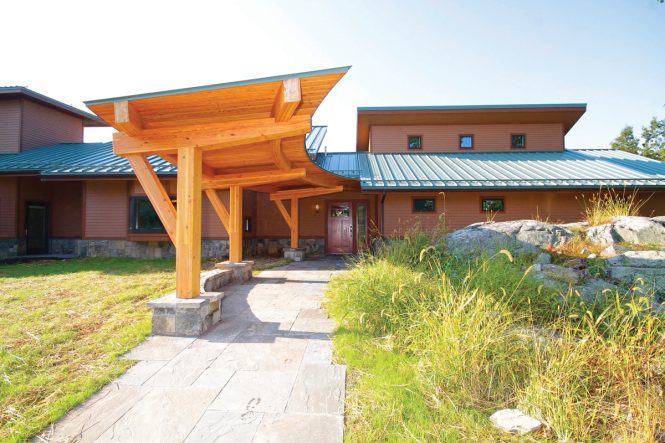The Evolution of Energy-Efficient Homes
By Jeff Eckes | | High-Performance House
As any regular reader of housing news can see, the industry is alight with talk of energy efficiency, carbon reduction and recently, Passive House and how much more comfortable and efficient they are. Read: radically less expensive to operate. It’s true, passive technologies, where the passive parts of the building, such as walls, roof, and floors, do the lion’s share of the work, are a building science best practice. And it’s where our building codes are going in the next five to 10 years. Already, major cities like New York and others are making Passive House-level performance a requirement for government-owned buildings like public schools and low-income housing, and this will accelerate in the years to come. That’s good news for our climate.
The not-so-good news is that as terrific for long-term decarbonization goals and well-funded early adopters this is, it leaves a majority of us in the dust saying: “It just costs too much.” But is this our only option? The plain truth is, building to Passive House criteria is more expensive than building housing that meets the minimum code requirements, and the poor performance that goes with it.
As a certified Passive House tradesperson and builder, I am very proud of that achievement. It’s also my personal commitment to build or renovate to the most energy-efficient and comfortable standards that I can, every time, and a big reason for why I came back to home building after my ‘semi-retirement’ before the pandemic. I set a goal of planting a company in the Valley that could provide housing that is hyper-efficient and affordable. But how can homeowners everywhere afford to share in this laudable goal? How can we become at least a small part of the solution, instead of one more part of the problem? Can we take small steps to energy efficiency, or do we simply throw our hands up and surrender to code-minimum performance until the government imposes these standards on everyone with building codes? Can a difference be made in how we think of and remodel our own homes, even in small steps that we can all afford, without making perfection the enemy of the good?
Yes, we can. Home builders and remodelers can, and must, squeeze every bit of efficiency from their work. From correctly sealing and insulating the spaces that are worked on, like a simple bathroom or kitchen remodel, to informing themselves and their clients of the new materials and practices available today, contractors must step up to the plate for their clients and the climate. Homeowners can and must insist on this level of performance, as well. Consumers can educate themselves and take the time to research the contractors they hire.

This Energy Star-certified home in Garrison designed and built by Alfandre Architects was inspired by the natural surroundings that overlook the Hudson River.
Both instances will require education, commitment, and adaptation. Smart designers and contractors who can read the writing on the wall are already on board with high-performance building technologies, but there are not enough of us to go around. If we all endeavor to use the contractors that do step up and embrace these technologies, the ones that don’t will eventually begin to see the light and decide that they want some of that sweet energy-efficient business, too.
So where does that leave us, with a climate crisis looming and 50 percent or more of our energy currently used to build, maintain, and power our buildings? It leaves us with an “any and all of the above” strategy, and many paths to efficiency, originating in building science and consumers, right here in the Hudson Valley and nationwide. It leads us to high-performance housing of all kinds, like Energy Star, Net Zero and, a “Pretty Good House” approach to home building, based on the book of the same name. It leaves us, at least temporarily, with what we are always left with—ourselves, and committed, climate-aware contractors, wherever we can find them. It leaves us with guides like this one, which began as a Passive House guide, and evolved into something more egalitarian and rechristened the High-Performance House Guide, where you can discover the science, and find the practitioners, that can make a difference in your home, even a little one. Our reward will be more comfortable, resilient, and efficient homes that save us money, and have a real effect on the climate that so many of us are concerned about.
It’s time we all got off the bench and into the thick of it, because we are what we always have been, our best hope of making a difference.
Jeff Eckes is the CEO of LDR Group, a Passive House design/build/renovate contractor located in the Mid-Hudson Valley. His new podcast, “Passive Aggressive,” on high-performance housing technologies, is available on podcast platforms.
